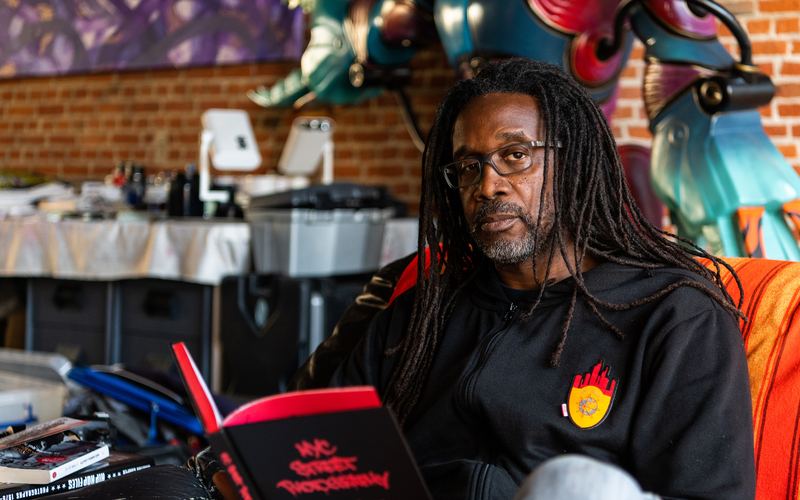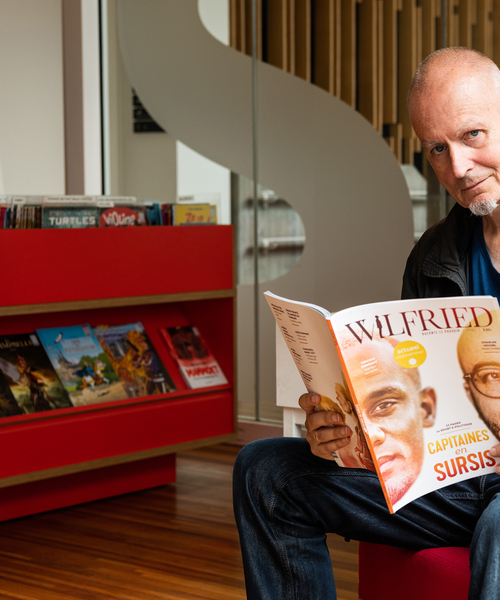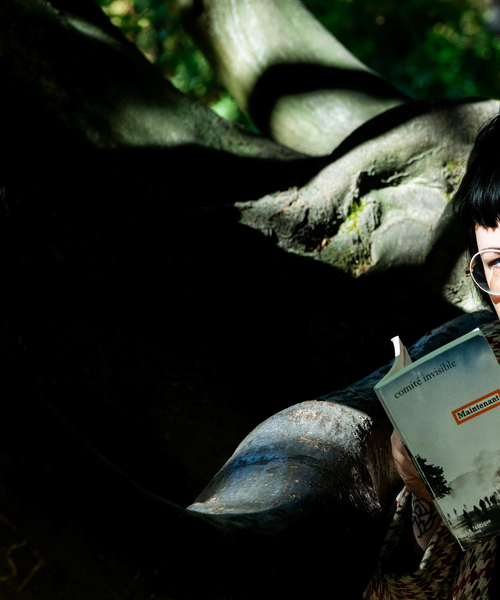portraits as readers (lll) - Kool Koor: in the beginning was the ‘writer’

Charles ‘Kool Koor’ Hargrove – Chuck to his friends – fell into street art at age 13. A world that was starting to grow at the time, and in which words and colours were sprayed on the walls of his native South Bronx first, and then beyond, across the subway. As though these were blank pages. Kool Koor today exhibits his organic and incandescent works in the world’s finest galleries and leading museums.
Precocious, Charles Hargrove was already passionate about drawing before he discovered, in 1976, that he could also express himself on walls. The first trigger was when a neighbour wrote his name on a fence in his area. So it was possible! Deciphering everything he saw in the urban space then became his obsession. And of course marking his passage, always further across New York, with his tags and then his frescoes, which gained in virtuosity. Of this subterranean period, Kool Koor retained a love of the message and its virality, rooted in the DNA of street art. He soon created his own language, enriching his artistic vision through his culture as a pure product of the 1960s – futuristic cities, robots, spaceships and metallic paintings blending and interweaving in a cosmography that over time became more and more abstract and rich in subtle aesthetic emotions.
At 16, as the youngest of the gang, Kool Koor took part in his first exhibition of graffiti artists, in New York. A few years later, he discovered Brussels through the first Belgian exhibition devoted to graffiti, other names in the show being Basquiat, Keith Haring and Futura 2000. Since the late 1980s it is in Brussels that Koor has written his own story, between walls, painting and music.
Fascinated by signs, calligraphies, illuminations, the origin and form of letters and by automatic writing, Kool Koor invites us to get closer to his multilayered and stylish world.
- Where do you like to read in Brussels?
I like to read at home because this is where I work. Making the most of the sun that lights up the studio throughout the day. Like today, look. But I rarely read during the day because I’m very busy. I generally read between two activities, when things are calm, in the late afternoon, or before I go to sleep or when I’m on holiday.
Outside, I really like Comptoir Florian, in the Matonge area. It’s a tea and coffee room, a charming and tiny spot, with only a few tables. It’s never packed, since even when it is packed, there aren’t many people anyway.
- Where do you like to buy books in Brussels?
I buy quite a lot at Waterstone’s. It’s an English bookshop that sells books … in English. If you can’t find what you’re looking for, you can also have books delivered from the main branch in London. I often discover lots of interesting things in airports. And then I have lots of books that were given to me by friends, like this book which I received from a New York friend, a compilation of street photos taken in New York since the early 1980s.*
- Where do you like to experience literature in Brussels?
There’s no particular place, but rather a way of doing which I learned from a friend. When I’ve finished reading a book I liked, I pass it on to a friend, who will read it then pass it on to someone else, and so on. Sometimes the books come back to me after a while. I love sharing my experiences and I like this idea that the book will have a life. Of course there are some books that I keep here in my library, but I’m not particularly attached to objects, the way some people are attached to jewels hidden in a cave.
follow Kool Koor :
* Brian Nobili and Ricky Powell, NYC Street Photography: It's the Joint


